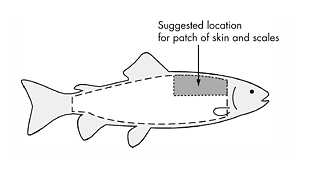Packaging, transporting or exporting fish
How to package, transport and export the fish you catch.
The law
By law, you must follow certain rules when you:
- clean and store fish
- package and transport fish
- export fish
A conservation officer can stop you anytime. If a conservation officer stops you:
- have your licence and your catch handy
- place coolers of fish where they are easy to inspect
Rules for cleaning and storing your catch
You may clean the fish you catch and keep, as long as conservation officers can identify:
- the number of fish
- the species of all fish in your possession, even the species without restrictions
When size restrictions apply
Conservation officers must be able to identify the length of a fish taken from a waterbody with size limits unless you are:
- carrying the fish overland
- preparing them for immediate consumption
- storing them at overnight accommodations
- taking them home by boat from temporary overnight accommodations (as long as you are not fishing at the time)
To find the length of a fish:
- measure from the tip of the mouth with the jaws closed to the tip of the tail
- compress the tail fin lobes to give the maximum possible length
Dos and don’ts for packaging fish
Do
- package fish so they can be easily counted and identified
- package each fish individually, or arrange fillets spread flat in a clear freezer bag
- leave a large patch of skin and scales on fillets so conservation officers can identify the species
- leave an additional identifying feature, like the head, on hard-to-identify species (e.g., lake whitefish vs. lake herring)
Don’t
- freeze fillets in a milk carton, margarine tub or other container
- freeze a large lump of fillets together in a plastic bag

Rules for transporting live fish
To transport live fish or spawn away from the body of water where they were caught you need:
- a stocking licence
- a licence to transport live fish
If you transport improperly packaged fish:
- your catch can be seized as evidence
- you can be ticketed and fined
- your court date will be near where you were inspected, not your home
Licence to transport live fish
Rules for exporting fish
- you need a permit to export lake sturgeon from Canada (in whole or part)
- for most other fish, you can leave the province with your catch and retain limit
- in the U.S., it’s against the law to import fish illegally taken from Canada
For more information, contact the nearest ministry office.
Updated: April 30, 2025
Published: July 17, 2014